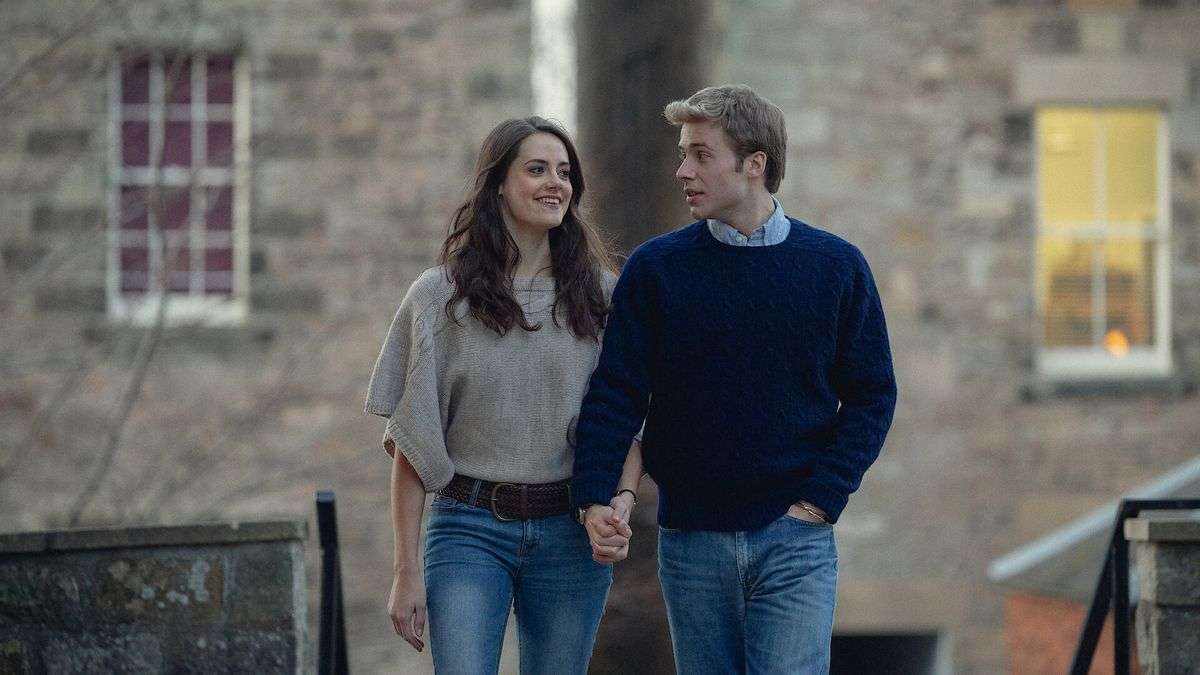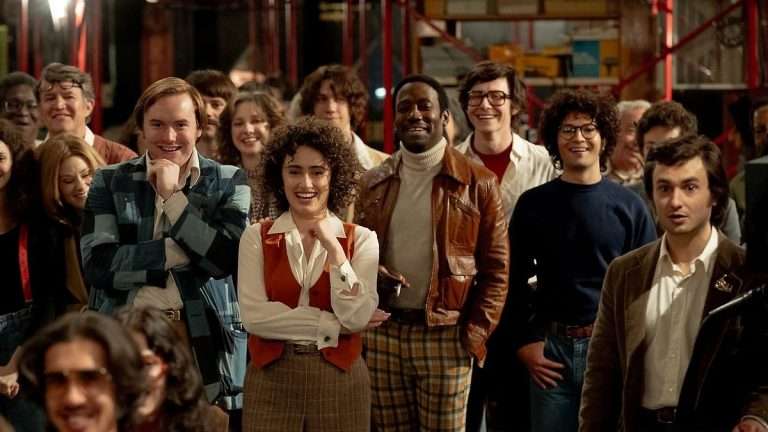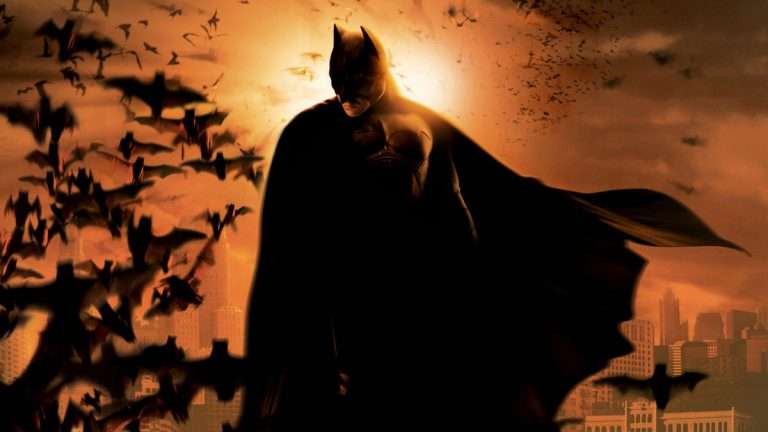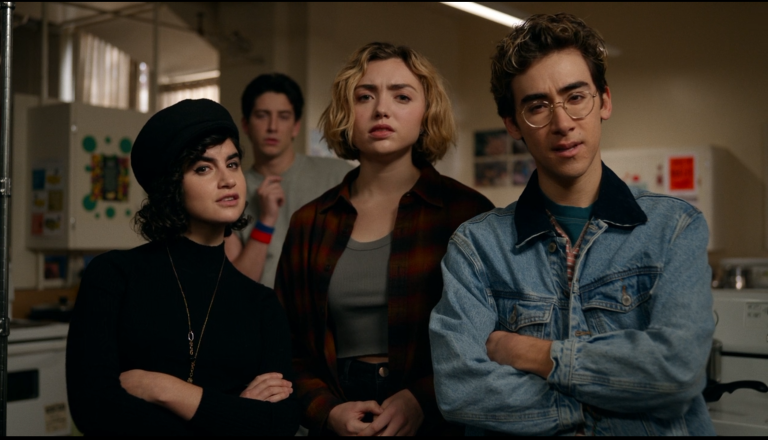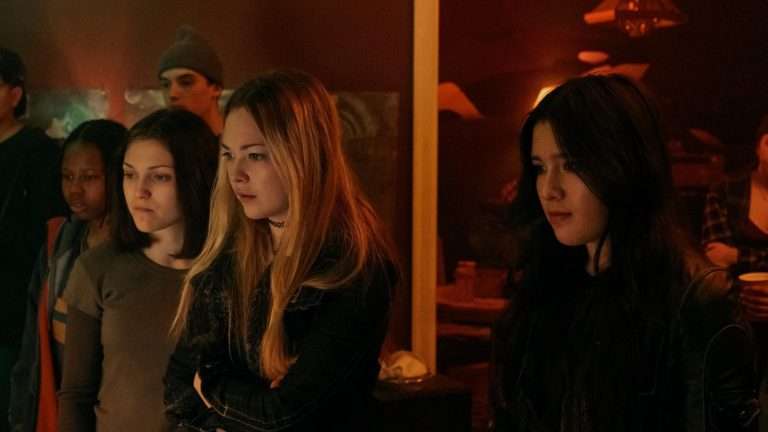The Crown (Season 6), Part 2: So ends one of Netflix’s most ambitious, expensive, and expansive shows of the last six years, a character study of the Royal Family, which slowly devolved into a sort of supportive stance of the royal family. It always felt inevitable, though, because when “The Crown” dealt with its period trappings (Season 1 – Season 4), it felt disconnected enough that the show could judge the Royal Family with a neutral gaze because of hindsight. However, as Season 5 enters, and with it the show’s inevitable insistence on its focus on both Charles and Diana, the Queen automatically began to be pushed to the side. The show, however, slowly becomes somewhat pro-Charles in its sentiment, which, as history tells us, is decidedly untrue as a concept.
The Crown (Season 6) Part 2 – Recap
This won’t be a traditional recap of the final six episodes because, frankly, there isn’t much material to recap with what the show tries to portray. On the contrary, it becomes a far more interesting picture to understand what the show chooses or not choose to show, which characters to spotlight, and up to which decade.
The Development of William
Episode 5 – Willsmania
Episode 5, titled Willsmania, goes into William’s sorrow and works as an extended epilogue of Diana’s arc that occurred in the last four episodes. We have seen, especially in the front half of the first part, how much William has been closer to Diana than anyone else in her family, including his younger brothers Harry and Charles. Thus, Diana’s loss weighs heavily on him, even more so because, as he is growing up, his physical countenance has begun to resemble the prime mixture of both Diana and his father. But as Charles exclaims to Camilla in their phone calls, he is not like his mother but a much shyer and quieter person than one would have expected.
But again, this is the major problem here, Charles acting concerned about trying to become a father and getting parenting advice about opening up to his children and effectively breaking the cycle feels such an out-of-character moment that this version of Charles and Camilla feels completely separate from their real-life counterparts. Again, “The Crown”’s tactic of trying to make the current King and Queen of England feel relatable doesn’t exactly sit well within the context of the show’s narrative. However, if that produces performances of this caliber by Dominic West and Olivia Williams, you can ignore fidelity up to a certain point.
Again, it falls to Philip and Elizabeth to convince Charles to talk with him and connect with him, ignoring his outburst because, at the end of the day, William is a teenager. But to that end, when a meeting is organized by the Queen, acting as a shield for the father and son to meet and hash it out, William’s remarks are biting, throwing the entirety of the blame for the loss of Diana to his father. It is understandable to a certain extent, but we also know that the love triangle between Charles, Camilla, and Diana has been exacerbated because of the “system.”
It might have been Charles’ duty to help William understand how the “system” of the royal family has made all of them victims, but again, that seems as unlikely as Charles admitting in the show that he hasn’t “risen to the occasion.” But as soon as Charles starts delving into his grief, William drops the real reason for Diana’s presence in Paris: the birthday party he had thrown for Camilla.
Thus, it ultimately falls to Prince Philip, who had been poring over old photos and reminiscing fondly over old memories, to try to bring the family back together. To that end, over a game of chess, Philip finally points out that the real reason for William’s anger towards Charles might be the burden of expectation William feels—that of taking Diana’s place in the spotlight and behaving similarly. It also ties deeply into William’s anger that Diana left him behind.
That ultimately leads to Philip orchestrating a meeting between William and Charles at Charles’ garden, where the two ultimately hug, and their relationship is repaired. Because, at the end of the day, a television episode has only 55 minutes of runtime. So it would also have to show William rowing to his mother’s grave site on the island, leaving a bouquet, and moving forward, and the show jumps forward in time as well. Because what else can you do?
Episode 7 – Alma Matter
At the end of the day, William’s portrayal is quite vanilla. It’s like Morgan takes the adage of the dull Royals as the ones holding the monarchy together and the flashier ones driving the attention way too seriously. As a result, the fact that Kate Middleton’s mother being responsible for pulling the strings in ensuring Kate Middleton would be a catch for the future prince feels like a repetition of the same playbook by Mohammed Al-Fayed. Except according to the show Al-Fayed was far more effective than, say, Middleton, though ultimately Middleton wins.
It never feels like the show ever rises above its soap-operatic trappings. So even if William goes to St. Andrews after taking a gap year and meets Kate Middleton, teased in a prologue sequence where William and Kate unwittingly meet in 1996 while William with Princess Diana was selling “The Big Issue” and Kate’s attraction towards William becomes “momager” Middleton’s life work, it doesn’t really work overall. The Crown also respects history to a certain extent, so by the time William comes to St. Andrews in 2000, it has to ensure that they are separated for a majority of the episode, and even include William being in a relationship with a fictional posh girl.
That posh girl inevitably becomes jealous upon seeing William and Kate finally interact in the library upon William discovering that Kate had already taken all the books of art history, and that sparks their conversation. But of course, both of the women start to realize that William had predictably created an image of himself for the “posh girl,” which is broken upon realizing that both Kate and he are “outdoorsy.” But of course, a catfight ensues, and in the confusion, William snaps at one of the students who had come to ask for his autograph.
Of course, this is a newer, more inclusive, and sensitive world, and thus William’s retort that they don’t understand what it’s like to have unwanted attention only results in him digging a deeper hole than he had already found himself in. He justifiably gets his ego dragged down by the two women when they remind him of the amount of ogling and stalking they would have to undergo every day.
This thus leads to William moping around at Balmoral, getting drunk, vibing to Portishead’s Glory Box, while Kate participates in Raisin Weekend at St. Andrews, an annual tradition leading to her being in a shaving cream fight and then having a new boyfriend. We are supposed to buy William’s sorrow and heartbreak even though that had been the only interaction throughout the show.
And, of course there is the realization that occurs post patching up. It becomes a set of recurring events, with William finally apologizing to Kate, who had been walking with her boyfriend a couple of days after the break. The strain occurs with Kate bringing “Finchie” to her house and has him meet with her parents, but a fight ultimately breaks out between her and her mother, leading to the revelation that “Momager” Carole had planned out Kate’s education according to William’s own trajectory, even taking the year gap and having her go to the same survival training camp; unluckily she misses William by a year.
Compared to the Middleton matriarch and her daughter, who is actually convinced by her mother to join back in the fray because the grapevine is abuzz with William leaving St. Andrews, the royal family feels more emotionally straightened out. At Christmas in Sardingham, the stories of William’s troubles lead to the elders advising him to change courses instead of William contemplating changing universities.
It also leads to the beginning of the relationship which the tabloids too like bringing up – the closeness shared between Elizabeth and William, whereby Elizabeth convinces him to not give up on dating. The Queen apparently is modern enough that she doesn’t scoff at “matters of the heart,” though “stalking” is another matter entirely. But at the end of the day, what convinces William to stay back is a late-night text from Middleton. I suppose that is lovely, but if that was supposed to endear these two to the viewers, it didn’t work.
The Existential Crisis of the Queen
Episode 6 – Ruritania
To ask “The Crown” to explore Elizabeth’s existential crisis and whether modernity is ever the answer is to ask them to become redundant. You couple that with the number of dream sequences that we had been subjected to in the first part and the nightmare of Elizabeth, where Tony Blair is crowned king, it makes ample sense. It’s not well done, and it is bizarre from a creative standpoint, but it does make sense; Tony Blair’s skyrocketing popularity, Elizabeth’s wilting at the realization that the Royal Family is out of touch with the public, and the polls conducted (and, of course, bashed by the Royal Family).
It also didn’t help that Tony Blair, at that time, drumming up support from the US and convincing Bill Clinton to send in additional ground troops for the invasion of Kosovo, launched a passionate speech that was convincing enough to turn the tide. It leads him to be nicknamed “King Tony” in the papers, while Elizabeth’s jealousy and snark, too, know no bounds.
But Elizabeth has her strengths, of course. On the one hand, her humor and interjection of such works work well while engaging with the Women’s Institute. Her years of experience also allow her to ask for Blair’s assistance, ensuring the royal family’s approach to modernity. The result, though, becomes a comedic tour where, through the eyes of Blair and his staff, “The Crown” actually allows itself to poke fun at the royal family and its mostly useless honorifics.
But Staunton’s portrayal of righteous fury in her silent demeanor while listening to Blair’s opinions underscores the point this episode is trying to make. In interviewing all the household members bestowed with the superfluous honorifics but proud of such generationally passed down “skills,” Elizabeth finally claps back at Blair in their next meeting, whereby she explains how the Royal Family has survived through the decades—immutability through invisibility and tradition—and no amount of modernity could ever capture the magic of that. In short, she dismisses Blair’s advice out of hand and also ignores Charles’ advice in supporting Blair’s opinions of a slimmed-down monarchy (the Crown’s version bears repeating).
Two things happen in conclusion that bears pointing out: the resignation of her long-time private secretary, Robert Fellowes, in favor of his assistant and “new blood,” and the Queen’s last laugh through her pedestal when she finally sees Blair floundering at a speech towards the members of the Women’s Institute, who literally silence him with their claps. The Royal Family can be decidedly petty, even on their supposed “high ground.”
The Death of Princess Margaret
Episode 8 – Ritz
Working on two separate timelines, “Ritz” again boasts that the few episodes of “The Crown” have the most genuinely interesting narrative because of the character it is focused on, Princess Margaret. The lifelong No. 2, the “dazzling” diamond of the Royal Family, while the Queen maintained the immutability of the monarchy, Ritz, is the final episode showcasing Lesley Manville as Princess Margaret.
Like all the seasons, The Crown gets the casting of both Elizabeth and Margaret right (Claire Foy and Vanessa Kirby, Olivia Colman and Helena Bonham Carter, and now Imelda Staunton and Lesley Manville), but in its final episode showing Margaret, “The Crown” also casts teenage versions of the two sisters (Viola Prettlejon as Elizabeth and Beau Gadson as Margaret, respectively), and they knock it out of the park. In depicting a mostly true incident of a celebratory night during V-Day, when the two sisters sneaked out with Porchey and Peter Townsend, it becomes one of the memories Margaret would recall throughout the time she and Elizabeth spent in this episode.
For the most part, adult Margaret’s storyline in this episode begins with her reminiscing about the events of V-day while playing bridge with Lillibet and coyly referencing an event that she builds up to something scandalous. It gets revealed in the final moments of the episode, but the present day then cuts back to Margaret suffering one of several strokes while regaling about a filthy poem written by one of her numerous paramours at a party.
Since this is Margaret, asking her to cut down on eating rich food and especially imbibing cigarettes is a fool’s errand. On the contrary, she would like to go out as the Number 2 she has always been known as, so she goes to Hawaii for a week-long event of fun and regaling until she suffers another stroke while bathing in scalding hot water in her bathroom and scarring the soles of her feet permanently.
But even that isn’t enough, and now she feels that her end is near, and she would like to celebrate her 70th birthday with a big birthday bash at the same hotel, which both the sisters share fond memories of but which Elizabeth is reticent of revealing. But we know, and all of Margaret’s actions show her as if shortening her life more and more to escape this Earth, as if the carefree life she had been living as a shield for all her sorrows throughout her life had now become her only solace, and now that is gone, and she has no reason to exist. So when she suffers another stroke, and Elizabeth visits her in the hospital, we know it’s coming. It doesn’t make it any easier.
We see Elizabeth not ready for Margaret to leave, as seen by the beautiful scene of her holding her hand while a single tear runs down the supine Margaret’s cheek. It is almost similar to the scene seen before of Margaret lying in bed and Elizabeth reading to her, “Sir Roderick Comes to Lunch.” But in that same scene, Margaret also reminds her of the night Elizabeth had been “irresponsible.”.
This leads to the flashback, where we see Elizabeth, having been sufficiently shocked out of her sheltered existence by a couple kissing, as she arrives at the Ritz. Elizabeth goes in to check her coat, where she meets a young black American GI who invites her downstairs to a dancing room. Playing “jitterbug,” a dance from an American ghetto like Harlem, told disparagingly, is enough for Elizabeth to satiate her curiosity, going downstairs and learning jazz and the environment in the underground club called “Pink Slink.”
As Elizabeth lets herself be carried away into the hot joyousness of dancing to a tune where “no rank” matters, we see her finally let her hair down. So does Margaret, who had finally come down while searching for her sister, only to find her dancing with the GI to swing music. We learn later on, while the two sisters are walking back to the palace, that Elizabeth had also kissed the GI. Is it a bit more progressive than the actual incident that might have occurred? Maybe, but that doesn’t mean it didn’t work.
The episode’s conclusion involves a masterful interweaving of its two timelines. Margaret is passing away in the “present day.” Once, when she was younger and more defiant, she said goodbye to Elizabeth at the royal gates. For a little while, Elizabeth turns her head away, and when she does, she sees her sister’s mature face assuring her that she will always be by her side—just as she was in life. We learn that her death occurred in 2002, months after 9/11 and the death of Porchey.
All Plot Threads Converge
Episode 9 – Hope Street
This is the episode where all the plot threads converge, and it also tries its best to mirror the current scenario of the Royal Family. On the one hand, Mohammad Al-Fayed (Salim Daw) returns and, in a TV interview, reiterates that the “Dracula British Royal Family” had tried to have Diana and Dodi murdered because Diana had been pregnant with a Muslim child. Mohammed had dismissed the investigation into the accident two years ago, and his current vociferous claims led to the formation of an official British inquiry titled Operation Paget.
This becomes a thorn in William’s good university days, which is also elevated by him knowing that Kate Middleton is newly single and will be modeling in a university fashion show that evening. She is also going to have to listen to Momager’s explicit instruction to “show off her assets,” and thus, the Crown recreates her real sheer dress. Needless to say, William is floored, but we are bored. The relationship seems to be very much underway, as both of them admit to looking at each other after the fashion show, but they are interrupted while leaning for a kiss (much to William’s chagrin) by his bodyguard stating that “Operation Tay Bridge” is in effect. In code, it means the Queen Mother has passed away.
The Queen’s existential crisis and, consequently, the Royal family’s start anew. For one, she loses both her sister and now her mother. Secondly, she is very much feeling underconfident regarding the Golden Jubilee celebration and whether the public wants to acknowledge the Crown anymore. It is further exacerbated by Operation Paget, which led to the police having to interrogate Charles as to whether he had any hand in having Princess Diana killed.
In isolation, perhaps Operation Paget or even the existential crisis of the Queen would have worked. Smashed together with the awkward university romance, it barely functions as a whole. There are also hints and flashes throughout the previous episodes of Harry growing up, realizing the painful journey of “Number 2,” and starting his self-destructive spiel. It’s a lot, and frankly, it needed more time.
The one interesting thing that works, though, is Tony Blair’s advice to the queen to uplift the charisma factor of the Royal Family by involving William more and officially bringing him to the spotlight. This leads to the Queen inviting William to have breakfast with her at Buckingham Palace and, in a rather delightful conversation, understanding William’s reticence of being in the spotlight and even the pressures he would face as the inevitable face of the Crown.
She is sympathetic enough to recall the time she had just been a naval wife in Malta before taking the crown, and she wants William to have as much of a normal life as she possibly can. She can’t resist insulting the Middleton by comparing Berkshire, their home county, as where they keep the horses and is unable to comprehend why they would have their meals in the kitchen.
Meanwhile, the results of Operation Paget are in (a couple of weeks rather than two years in reality), and of course, all of Fayed’s claims are debunked. Princess Diana hadn’t been engaged to Dodi Fayed; blood samples carried out from the car were tested, which confirmed Diana hadn’t been pregnant at that time. Finally, the Royal family hadn’t tampered with the alcohol level of the driver, Henri Paul. It was an unfortunate accident whereby a driver, who had been too drunk, should never have been behind the wheel in the first place and shouldn’t have been ordered to drive faster. He had already lost control of the car by the time it entered the tunnel.
But Commissioner John Stevens is sympathetic to Al-Fayed’s heartbreak but also acknowledges that conspiracy theories have no basis in fact and that “princesses should be allowed to rest in peace.” Al-Fayed’s response reads a statement calling out the British people for organizing a “witch hunt” and announcing that he would be leaving the United Kingdom after a “campaign of persecution.” Interestingly, the show never makes any effort to explore it further. Especially concerning is that towards the end of her life, the Queen had been taken as the poster child of “white supremacy,” and the show had a chance to explore the colonial hangover that Al-Fayed had throughout his life and had been explored in one episode of Season 5.
The contemporary form of villainy, in comparison with Al-Fayed, Carol Middleton, falls flat because her methods to orchestrate the romance between Kate and William feel milquetoast. The meeting of William with Kate and her parents and watching the Golden Jubilee function work to ensure William understands what his future ultimately holds and what the function of the monarchy ultimately entails. It makes him realize his duty and race back to join his grandmother, but it also makes him slowly and steadily become “the company man” that his younger brother would grow to despise. The show doesn’t go too deep into a lot of it, but that rift between the brothers starts to grow from here on out, according to “The Crown.”.
The Whimpering Ending of “The Crown”
Episode 10 – Sleep, Dearie Sleep
The final episode’s obsession with “Operation London Bridge” or the planning of the Queen’s eventual death feels morbid in its pomp and splendor. It also feels like overlong foreshadowing because of the Queen’s actual death in 2022. That is why the ultimate conflict of whether the Queen would abdicate the throne to her son finally because he feels “ready” doesn’t work because we know she doesn’t. If the real-life Queen hadn’t passed away, such a level of foreshadowing would have been unnecessary.
What The Crown does reveal is the immediate concern for the Queen, Charles’ final wish, to marry Camilla Parker-Bowles, who are now living together in Highgrove. For the first time, the Queen is willing to consider his request, but because she is also the head of the “Church of England,” “The Crown” gives us a scene where the Queen discusses with the bishops how she could legally marry the two of them. The bishops acquiesced with a caveat: they could marry in a registry office, and they would be married in the church only after conducting a prayer service, which would essentially ask them to repent of their adultery.
The next scene, where The Queen has a talk with her grandsons regarding his father’s wishes, is very revealing in showing how Harry would be getting pushed out of future discussions of the monarchy. Harry calls out William as “the company man,” while William is positioned as the man capable of looking at the big picture through the context of the system and realizing that his father marrying Camilla would make him happy and The Crown stabilized. Thus, the wedding is approved.
The next job on the itinerary of the episode, because it sure feels structured like one, is the Queen deciding on a perfect bagpipe lament for her inevitable funeral. She summons the royal bagpiper, who suggests the name of the episode, and the Queen asks him to play her the tune inside the palace itself. It’s a mournful lament, made all the more poignant because of Staunton’s performance and the reaction of the staff in the palace.
The final job on the itinerary comes in the form of “The Crown,” tackling the Prince Harry-swastika debacle, where a fancy dress competition with the theme of “Colonials and Natives” (because that is such a good idea) leads to Harry’s tone-deaf idea of wearing the uniform of an SS officer. It must be addressed, though, that William and Kate didn’t exactly dissuade Harry much, except Kate’s weak retort of “maybe cover the swastika.” Of course, that night, pictures of Harry wearing a uniform with a swastika armband hit the papers. The consequence of those actions by Harry amounts to nothing more than a few chores, but this plot thread deserved an entire episode of its own.
But now “The Crown” finally enters the doubt phase of Elizabeth, where she has a discussion with herself (Olivia Colman) on whether to abdicate the monarchy to her son. Colman’s version of Elizabeth argues for the love Elizabeth has for her son and the acknowledgment that he is ready and it is time for her to step away. To that end, present-day Elizabeth decides to write a speech that has the entire Buckingham Palace in a tizzy, perhaps rightly so because they would be correct in deducing that the crown would be finally given to Charles. However, none of the family members would be able to extract that out of Elizabeth.
However, on the day of Charles and Camilla’s wedding, Elizabeth again has a mental conversation with herself, this time the turn-of-the-century version of herself (Claire Foy). She is the determined, confident, and pragmatic one who reminds this Elizabeth of her mother’s advice: not only does the Crown always win, but she is the only one capable enough to pull the monarch through all the tough waters, while her successors would make a mess of things. It would lead to a geriatric queen finally abdicating her crown to a geriatric successor, true, but at the end of the day, that couldn’t be helped.
The Crown Season 6 (Part 2), Series Finale Ending Explained:
The realization leads to Elizabeth crossing off lines from her speech and, while reciting it, even skipping one of the cue cards. She manages to successfully bless her eldest son on his marriage, as well as ask William to take care of Harry because the Number 2 job is significantly harder than it looks.
The most important scene occurs after the events of the marriage, where Elizabeth retreats to the silence of her chapel and is met by Philip. Philip, in his own raw and unfiltered manner, acknowledges that he knew what had been Elizabeth’s intention, but he is also glad that she had seen the error of her ways. In a way that could only be called lazy foreshadowing, Philip acknowledges that the future of the monarchy is now out of their hands because they will be dead and buried in the ground by the time the monarchy is dismantled.
As he points out, none of the people in the other room are remotely ready to take up the crown, while she has been “born ready.” It is a self-congratulatory move, yes, and pro-royalty, but in the voice of Jonathan Pryce, the intonation does work in bringing thematic weightage to a scene that takes place 17 years before the monarch’s actual death.
But as the continuation of the thematic weightage, we see The Queen envision her funeral, the casket a perfect replica of the real-life casket of the Monarch, and as the casket is lowered, we see her being visited by all her iterations—the teenage iteration played by Viola Prattlejohn—and then as she begins to walk out of the room, we see her joined on both sides by the Colman and Foy iterations in black billowy cloaks. And as if the light from the door at the end of the hall is beckoning to her, the Queen walks the full length of the hall and walks out of the door alone, even with all the experiences depicted by those iterations residing within her.
So ends “The Crown,” a show whose ending might have worked if the real-life monarch hadn’t exited the mortal realm the prior year. But the show’s declining stage of quality had been rapidly evident from Season 4 itself, and by Season 5, the show had started to become more ambivalent, leaning towards a more supportive bent towards the Royal Family rather than being squarely neutral throughout like the first three seasons. The fact that the show’s portrayal of Charles is so positive and so progressive feels tailor-made to appease modern audiences and goes against the grain of the actual characters.
No one could argue that “The Crown” is a historical manifesto, but the show has been a box of dramatic elements to be surprised and enamored by in its first three seasons and a showcase for British thespians to flex their muscles through all the seasons, whenever they would be given a chance to flex them. It still doesn’t take away the fact that “The Crown” ends in a whimper, with potential themes that could have been explored in greater depth but were chosen not to.

